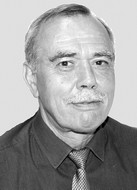Special physical working capacity building by relaxation practices
Фотографии:
ˑ:
Dr.Biol., Professor Y.P. Denisenko1
PhD, Associate Professor R.A. Gumerov1
PhD A.I. Morozov1
A.Kh. Mardanov1
1Naberezhnye Chelny State Pedagogical University, Naberezhnye Chelny
Presently the physical working capacity building practices in sports are dominated by the training and competitive load stepping methods that are efficient enough for the key mission albeit associated with high risks for the athletes’ health. Moreover, the higher are the training scopes and intensities (which have virtually reached the natural limits in modern sports), the more severe are the injuries and health disorders. To analyze the sport-specific movement control and coordination, muscular contraction and relaxation mechanisms and the central nervous (CNS) and neuromuscular (NMS) system functionality under the study, we applied the Y.V. Vysochin computerized polymyographic method which has been successfully used to support the elite team trainings. About 600 differently skilled athletes were sampled for the new relaxation practice piloting experiments. It took many years of experiments for the authors to develop the key special relaxation methods and tools for athletic progress at every training process stage. The study data and analyses demonstrate the need for a new integrated training system for physical and functional progress applicable from the early training stages to secure a multisided progress with persistent improvements in the bodily relaxation and inhibition skills and processes and natural protection mechanisms – to form the most efficient type of long-term relaxation-driven adaptability and secure individual progress.
Keywords: extreme conditions, protection functionality, muscle relaxation rate, central nervous system, relaxation.
References
- Abovyan T.Zh. Razrabotka metodiki predsorevnovatelnoy podgotovki v ushu na osnove ispolzovaniya dozirovannykh fizicheskikh i gipoksicheskikh nagruzok. Avtoref. dis. kand. ped. nauk [Development of pre-season training technique in Wushu based on graduated physical and hypoxic loads. PhD diss. abstract]. St. Petersburg: 2000, 20 p.
- Aivazyan T. A. Relaksatsionnaya terapiya s ispolzovaniem biologicheskoy obratnoy svyazi v lechenii bolnykh gipertonicheskoy boleznyu [Relaxation therapy with biofeedback in treatment of patients with hypertension]. Bioupravlenie: Teoriya i praktika. Novosibirsk, 1988, pp. 133–141.
- Azhishchenko A. A. Razvitie koordinatsii dvizheniy u yunykh gimnastov na etape otbora i nachalnoy podgotovki. Avtoref. dis. kand. ped. nauk [Development of coordination of movements in junior gymnasts at selection and beginner training stage. PhD diss. abstract]. Leningrad, 1987, 19 p.
- Bayevsky R. M., Motylyanskaya R. E. Ritm serdtsa u sportsmenov [Heart rate in athletes]. Moscow: Fizkultura i sport publ., 1986, 144 p.
- Bal’sevich V. K. Ontokineziologiya cheloveka [Human ontokinesiology]. Moscow: Teoriya i praktika fiz. kultury i sporta publ., 2000, 275 p.
- Vysochin Yu. V. Miorelaksatsiya v mekhanizmakh povrezhdeniy oporno-dvigatelnogo apparata [Miorelaxation in mechanisms of musculoskeletal injuries]. Sport i zdorovye natsii [Sports and national health]. Col. Works. St. Petersburg, 2001, pp. 74–84.
- Vysochin Yu. V., Denisenko Yu. P. Sovremennye predstavleniya o fiziologicheskikh mekhanizmakh srochnoy adaptatsii organizma sportsmenov k vozdeystviyam fizicheskikh nagruzok [Modern ideas about physiological mechanisms of athlete's urgent adaptation to effects of physical exercises]. Teoriya i praktika fiz. kultury, 2002, no. 7, pp. 2–6.
- Vysochin Yu. V., Denisenko Yu. P. Faktory, limitiruyuschie progress sportivnyikh rezultatov i kvalifikatsii futbolistov [Factors limiting progress in sports results and qualifications of football players]. Teoriya i praktika fiz. kultury, 2001, no. 2, pp. 17–21.
- Denisenko Yu. P. Miorelaksatsiya v sisteme podgotovki futbolistov. Avtoref. dis. dokt. biol. nauk [Miorelaxation in training system of footballers. Doct. diss. abstract (Biol.)]. Moscow, 2007, 48 p.
- Kuchkin S.N. Bioupravlenie v meditsine i fizicheskoy kulture [Biocontrol in medicine and physical education]. Volgograd: VSAPC publ., 1998, 155 p.
- Levenkov A.E. Funktsiya rasslableniya skeletnykh myshts i sostoyanie tsentralnoy gemodinamiki v pokoe i pri fizicheskikh nagruzkakh. Avtoref. dis. kand. biol. nauk [Function of relaxation of skeletal muscles and state of central hemodynamics at rest and under exercise. PhD diss. abstract]. St. Petersburg, 1998,21 p.
- Platonov V.N. Adaptatsiya v sporte [Adaptation in sports]. Kiev: Zdorovye publ., 1988, 257 p.
- Sentyabrev N.N. Napravlennaya relaksatsiya organizma pri napryazhennoy myshechnoy deyatelnosti cheloveka [Targeted relaxation of body under strenuous muscular activity]. Volgograd: VSAPC publ., 2004, 142 p.




 Журнал "THEORY AND PRACTICE
Журнал "THEORY AND PRACTICE